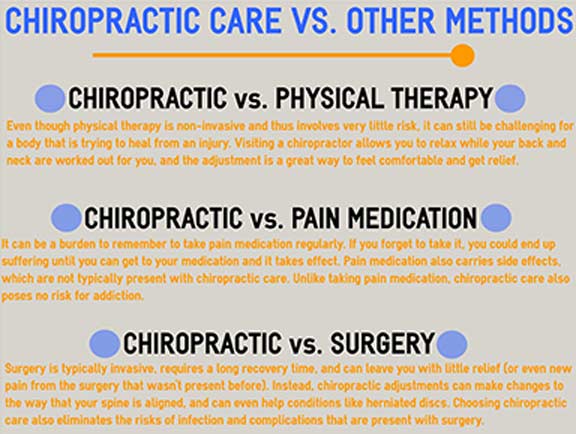Frequent Activities That Add To Back Pain And Ways To Avoid Them
Frequent Activities That Add To Back Pain And Ways To Avoid Them
Blog Article
Short Article By-Bates Harper
Keeping appropriate pose and avoiding usual challenges in daily activities can substantially impact your back wellness. From how you sit at your desk to how you raise hefty objects, small modifications can make a big distinction. Picture a day without the nagging neck and back pain that impedes your every action; the solution could be easier than you think. By making a couple of tweaks to your day-to-day habits, you could be on your means to a pain-free presence.
Poor Position and Sedentary Way Of Life
Poor pose and an inactive way of life are two major contributors to back pain. When intergrative slouch or suspicion over while resting or standing, you put unneeded pressure on your back muscular tissues and spine. This can cause muscle mass imbalances, tension, and eventually, chronic pain in the back. In addition, sitting for extended periods without breaks or physical activity can compromise your back muscle mass and lead to rigidity and pain.
To combat inadequate position, make a conscious initiative to sit and stand directly with your shoulders back and aligned with your ears. Keep in mind to maintain your feet level on the ground and stay clear of crossing your legs for extended periods.
Incorporating regular stretching and reinforcing exercises right into your daily routine can additionally aid improve your position and alleviate back pain connected with an inactive lifestyle.
Incorrect Lifting Techniques
Improper lifting methods can dramatically add to back pain and injuries. When you raise heavy things, remember to flex your knees and utilize your legs to raise, instead of relying on your back muscle mass. Avoid turning your body while lifting and keep the object near to your body to lower pressure on your back. It's crucial to preserve a straight back and prevent rounding your shoulders while lifting to stop unneeded stress on your spinal column.
Always examine the weight of the item prior to raising it. If it's as well hefty, request assistance or usage equipment like a dolly or cart to transfer it securely.
Keep in mind to take breaks throughout lifting jobs to give your back muscle mass an opportunity to relax and stop overexertion. By executing appropriate training techniques, you can stop neck and back pain and reduce the threat of injuries, guaranteeing your back stays healthy and balanced and strong for the long term.
Absence of Routine Workout and Extending
A less active way of living without normal exercise and extending can dramatically add to pain in the back and discomfort. When you don't engage in exercise, your muscular tissues come to be weak and stringent, bring about bad position and raised stress on your back. Normal workout assists strengthen the muscle mass that sustain your spinal column, boosting security and decreasing the threat of pain in the back. Including stretching into your routine can likewise enhance adaptability, protecting against rigidity and pain in your back muscular tissues.
To stay clear of back pain brought on by a lack of workout and extending, aim for a minimum of half an hour of modest exercise most days of the week. Include workouts that target your core muscles, as a solid core can help reduce pressure on your back.
Additionally, take breaks to extend and move throughout the day, especially if you have a workdesk work. Simple stretches like touching your toes or doing shoulder rolls can help soothe tension and stop pain in the back. Prioritizing routine exercise and extending can go a long way in preserving a healthy and balanced back and minimizing discomfort.
Verdict
So, bear in mind to sit up right, lift with your legs, and stay energetic to prevent back pain. By making straightforward modifications to your day-to-day practices, you can prevent the discomfort and limitations that include back pain. Care for your spinal column and muscles by practicing good pose, appropriate training strategies, and regular workout. https://www.medicalnewstoday.com/articles/325707 will certainly thanks for it!
